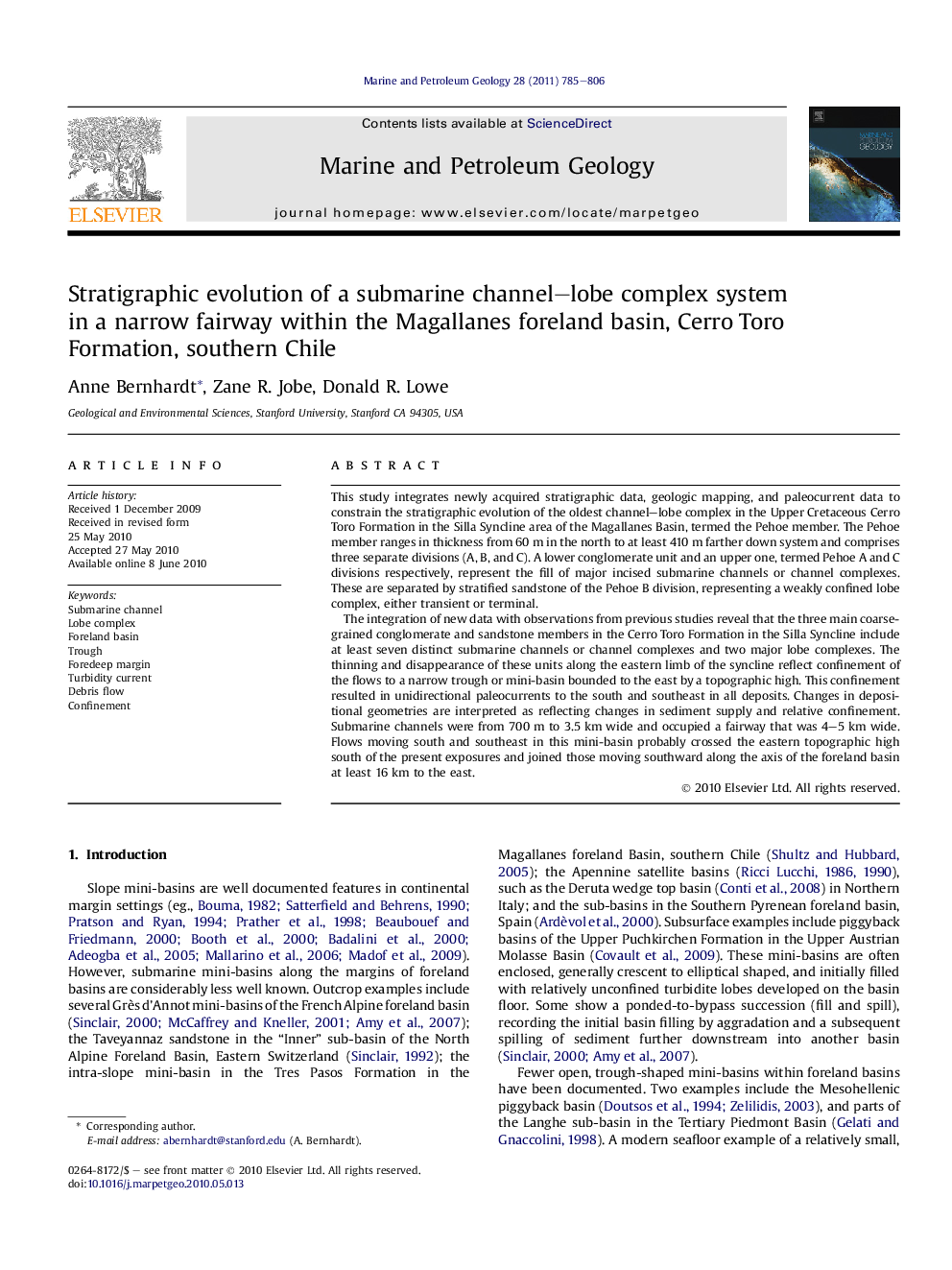| Article ID | Journal | Published Year | Pages | File Type |
|---|---|---|---|---|
| 4696074 | Marine and Petroleum Geology | 2011 | 22 Pages |
This study integrates newly acquired stratigraphic data, geologic mapping, and paleocurrent data to constrain the stratigraphic evolution of the oldest channel–lobe complex in the Upper Cretaceous Cerro Toro Formation in the Silla Syncline area of the Magallanes Basin, termed the Pehoe member. The Pehoe member ranges in thickness from 60 m in the north to at least 410 m farther down system and comprises three separate divisions (A, B, and C). A lower conglomerate unit and an upper one, termed Pehoe A and C divisions respectively, represent the fill of major incised submarine channels or channel complexes. These are separated by stratified sandstone of the Pehoe B division, representing a weakly confined lobe complex, either transient or terminal.The integration of new data with observations from previous studies reveal that the three main coarse-grained conglomerate and sandstone members in the Cerro Toro Formation in the Silla Syncline include at least seven distinct submarine channels or channel complexes and two major lobe complexes. The thinning and disappearance of these units along the eastern limb of the syncline reflect confinement of the flows to a narrow trough or mini-basin bounded to the east by a topographic high. This confinement resulted in unidirectional paleocurrents to the south and southeast in all deposits. Changes in depositional geometries are interpreted as reflecting changes in sediment supply and relative confinement. Submarine channels were from 700 m to 3.5 km wide and occupied a fairway that was 4–5 km wide. Flows moving south and southeast in this mini-basin probably crossed the eastern topographic high south of the present exposures and joined those moving southward along the axis of the foreland basin at least 16 km to the east.
